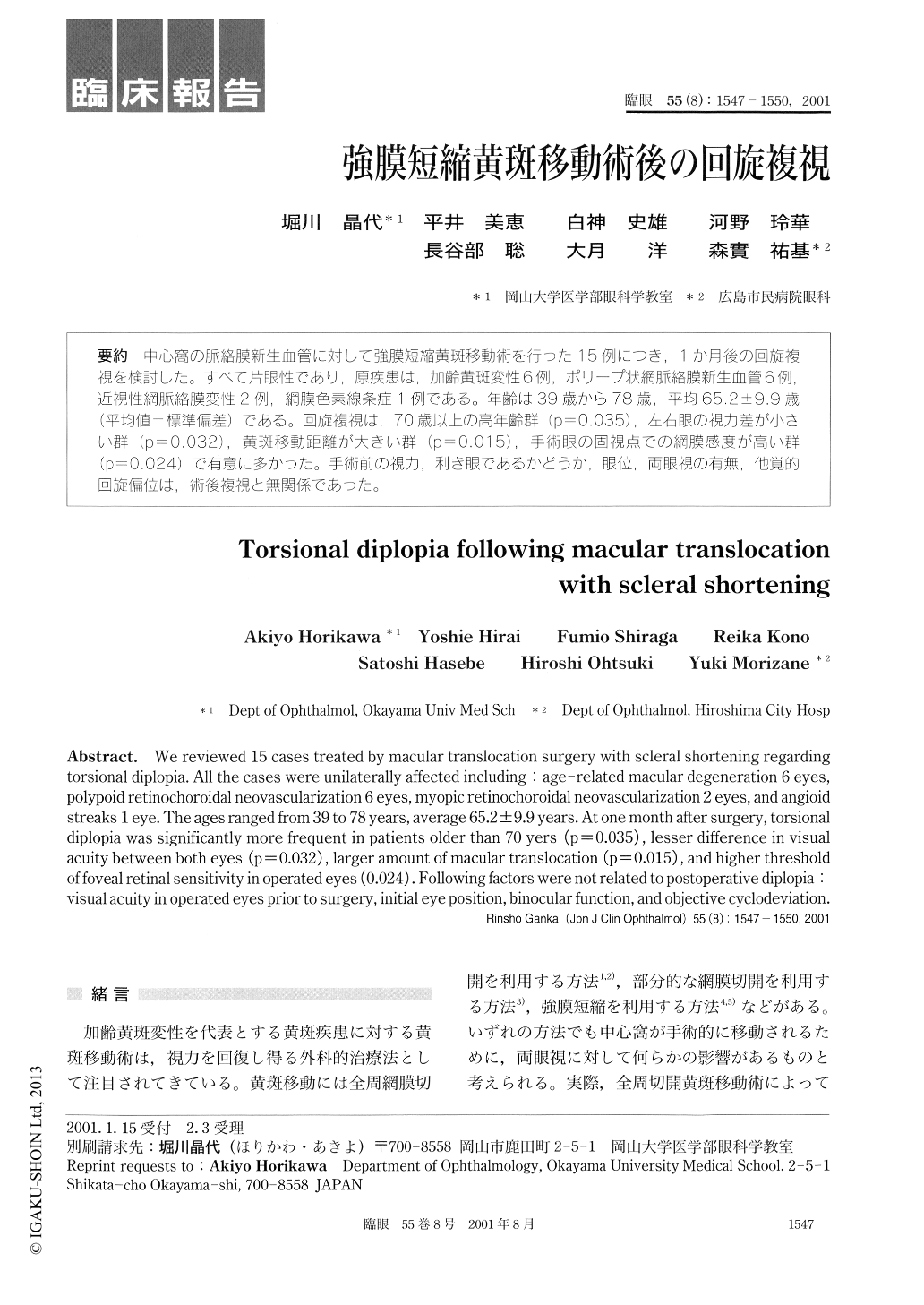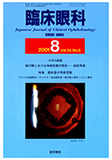Japanese
English
- 有料閲覧
- Abstract 文献概要
- 1ページ目 Look Inside
中心窩の脈絡膜新生血管に対して強膜短縮黄斑移動術を行った15例につき,1か月後の回旋複視を検討した。すべて片眼性であり,原疾患は,加齢黄斑変性6例,ポリープ状網脈絡膜新生血管6例,近視性網脈絡膜変性2例,網膜色素線条症1例である。年齢は39歳から78歳,平均65.2±9.9歳(平均値±標準偏差)である。回旋複視は,70歳以上の高年齢群(p=0.035),左右眼の視力差が小さい群(p=0.032),黄斑移動距離が大きい群(p=0.015),手術眼の固視点での網膜感度が高い群(p=0.024)で有意に多かった。手術前の視力,利き眼であるかどうか,眼位,両眼視の有無,他覚的回旋偏位は,術後複視と無関係であった。
We reviewed 15 cases treated by macular translocation surgery with scleral shortening regardingtorsional diplopia.All the cases were unilaterally affected including: age-related macular degeneration 6 eyes,polypoid retinochoroidal neovascularization 6 eyes, myopic retinochoroidal neovascularization 2 eyes, and angioidstreaks 1 eye. The ages ranged from 39 to 78 years, average 65.2±9.9 years.At one month after surgery, torsionaldiplopia was significantly more frequent in patients older than 70 yers (p=0.035),lesser difference in visualacuity between both eyes (p=0.032) , larger amount of macular translocation (p=0.015), and higher thresholdof foveal retinal sensitivity in operated eyes (0.024) . Following factors were not related to postoperative diplopia:visual acuity in operated eyes prior to surgery, initial eye position, binocular function, and objective cyclodeviation.

Copyright © 2001, Igaku-Shoin Ltd. All rights reserved.


